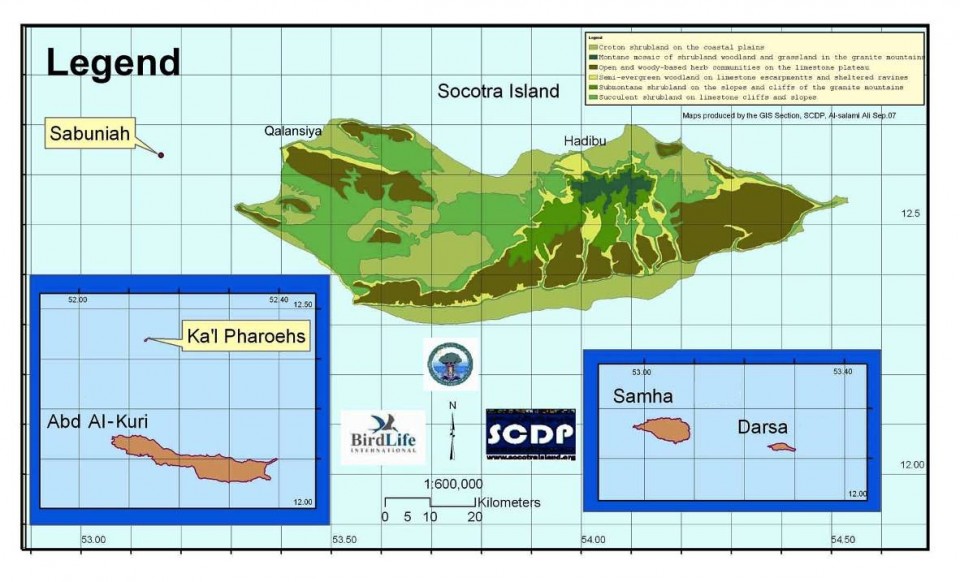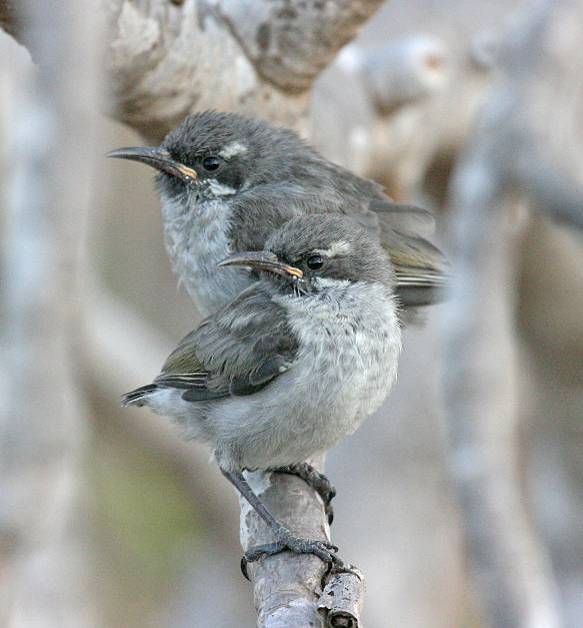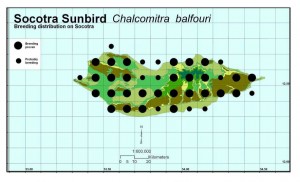By Ri chard Porter
chard Porter
BirdLife International, Cambridge
The publication of the seminal Ethnoflora of the Socotra Archipelago by RBGE’s Tony Miller and Miranda Morris in 2004 was not just an important ‘botanical moment’, but also one that helped mould the study of Socotra’s bird populations.
Published in the latest issue of Sandgrouse,the journal of the Ornithological Society of the Middle East (OSME), a paper (the first of two) by Ahmed Saeed Suleiman and me, chronicles and documents the populations and maps the distribution of the breeding birds of Socotra.
** Porter, RF & AS Suleiman. 2013. The populations and distribution of the breeding birds of the Socotra archipelago, Yemen: 1. Sandgrouse to Buntings. Sandgrouse 35: 43-81.
This is the most comprehensive assessment of the breeding populations of birds of any large region in the Middle East, possibly even the world, and I hope it can provide a base-line for environmental monitoring on the island.
So what is the botanical connection? Well Miller and Morris identified seven main habitat types on the island, shown in this map, and these provided the basis for calculating bird populations from over 380 kms of transects made between 1999 and 2008. Through our detailed surveys and with a knowledge of the area of each habitat type we were able to calculate the total population of each breeding species and, equally important, determine the importance of each habitat for each species. That would not have been possible without the botanists’ hard graft.
To give a flavour of the paper, here is the entry for Socotra Sunbird, one of the ten endemic breeding birds in the archipelago:
Socotra Sunbird Chalcomitra balfouri (endemic, Figure 20, Plate 30).
This, the sixth commonest breeding bird in the archipelago, is only found on Socotra island where it is widespread, especially where trees, shrubs and nectar producing plants are in flower 0–1000 m asl. Analysis of the transect data shows a population of 65 876 individuals (95% CI 50 362–86 169). Table 5 shows that the highest density, c29 birds/km2, was recorded in the semi-evergreen woodland of limestone escarpments and sheltered ravines (habitat type A). Song and display have been recorded 30 October–5 April, copulation 23 February, nest building 30 October–16 March, nests with eggs (2 ´ c/2) 1–3 March and nests with young 30 March
(c/3)–1 May. Recently fledged (but still dependent) young have also been seen on 27 October (see Plate 30) and thus eggs would have been laid in about mid September. Thus the known breeding season is September–May.
Both projects – the botanical and bird studies – were funded wholly or partly by the UK’s Darwin Initiative and only progressed because of the involvement and support of our Socotran collegues and friends. I would like to thank them.
**If you would like to purchase a copy of Sandgrouse 35, the price is £10, including postage. Contact sales@osme.org to order and find out how to pay.



